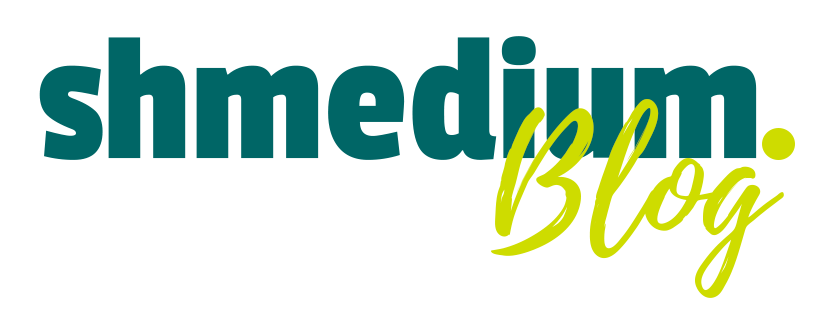Home Equity Lines of Credit (HELOCs) have long been a popular choice for homeowners looking to tap into their home equity. However, traditional HELOCs typically require thorough income verification, which can be a barrier for some borrowers. This guide explores the concept of HELOC without income verification, its benefits, how it works, and what to consider before opting for this financing option.
Understanding HELOC
A Home Equity Line of Credit (HELOC) is a revolving line of credit secured by the equity in your home. Unlike a lump sum home equity loan, a HELOC allows you to borrow as needed, up to a predetermined limit, and only pay interest on the amount you use. This flexibility makes HELOCs an attractive option for various financial needs, including home improvements, debt consolidation, and emergency expenses.
Traditional HELOC Requirements
Typically, obtaining a HELOC involves several key requirements:
- Income Verification: Lenders require proof of income to ensure you can repay the borrowed amount. This usually involves providing pay stubs, tax returns, and other financial documents.
- Credit Score: A good credit score is essential for securing a HELOC. Most lenders prefer scores of 680 or higher.
- Home Equity: You must have sufficient equity in your home, usually at least 15-20% of the home’s value.
- Debt-to-Income Ratio: Lenders assess your debt-to-income (DTI) ratio to ensure you can manage additional debt. Typically, a DTI ratio of 43% or lower is preferred.
HELOC Without Income Verification
A HELOC without income verification, also known as a no-doc or stated income HELOC, allows borrowers to access their home equity without the need to provide traditional income documentation. This type of HELOC is designed for borrowers who may have difficulty verifying their income through standard means, such as self-employed individuals, retirees, or those with irregular income streams.
How It Works
In a no-income verification HELOC, the lender focuses more on the value of the property and the borrower’s creditworthiness rather than their income. Here’s how it typically works:
- Property Appraisal: The lender will conduct an appraisal to determine the current market value of your home and the available equity.
- Credit Check: A thorough credit check is performed to assess your credit score and overall financial health.
- Equity Assessment: Based on the appraisal, the lender determines the amount of equity available for the HELOC.
- Loan Approval: If your credit score and home equity meet the lender’s criteria, the HELOC is approved without requiring proof of income.
Benefits of HELOC Without Income Verification
Opting for a no-income verification HELOC offers several benefits:
- Easier Access for Self-Employed Borrowers: Self-employed individuals often have fluctuating income and may find it challenging to provide consistent income documentation. A no-doc HELOC provides them with easier access to home equity.
- Faster Approval Process: Without the need for extensive income documentation, the approval process for a no-income verification HELOC can be quicker and more streamlined.
- Flexible Financing: Borrowers can use the funds for various purposes, such as home renovations, debt consolidation, or emergency expenses, without the hassle of income verification.
- Retain Financial Privacy: Some borrowers prefer to keep their financial details private. A no-income verification HELOC allows them to access funds without disclosing detailed income information.
Drawbacks and Considerations
While a no-income verification HELOC offers several advantages, it also comes with certain drawbacks and considerations:
- Higher Interest Rates: Lenders may charge higher interest rates for no-doc HELOCs to offset the increased risk of lending without income verification.
- Stricter Requirements: To compensate for the lack of income documentation, lenders may impose stricter credit score requirements and lower loan-to-value (LTV) ratios.
- Limited Availability: Not all lenders offer no-income verification HELOCs, so borrowers may need to shop around to find suitable options.
- Risk of Overborrowing: Without income verification, borrowers might be tempted to overborrow, potentially leading to financial strain if they cannot manage the repayments.
Who Should Consider a No-Income Verification HELOC?
A no-income verification HELOC can be an excellent option for certain borrowers, including:
- Self-Employed Individuals: Those with irregular or fluctuating income who struggle to provide traditional income documentation.
- Retirees: Retirees with substantial home equity but no regular income from employment.
- Real Estate Investors: Investors looking to leverage equity in their properties without the hassle of income verification.
- Borrowers with Unique Income Sources: Individuals with non-traditional income sources, such as freelancers or gig economy workers, who may find it challenging to provide consistent income documentation.
How to Apply for a HELOC Without Income Verification
Applying for a no-income verification HELOC involves several steps:
- Research Lenders: Not all lenders offer no-doc HELOCs, so it’s essential to research and identify those that do. Look for lenders with positive reviews and a history of working with borrowers in similar situations.
- Check Your Credit Score: Ensure your credit score meets the lender’s requirements. A higher credit score increases your chances of approval and securing favorable terms.
- Gather Documentation: While income documentation may not be required, you will still need to provide other documents such as proof of homeownership, property tax statements, and mortgage statements.
- Get a Property Appraisal: The lender will require an appraisal to determine the current market value of your home and the available equity.
- Submit Your Application: Complete the lender’s application process, providing all necessary documentation and information about your property and financial situation.
- Review Terms and Conditions: Carefully review the terms and conditions of the HELOC offer, including the interest rate, draw period, repayment terms, and any fees associated with the loan.
- Close the Loan: If you agree to the terms, proceed with the closing process, which includes signing the loan agreement and any other required documentation.
Tips for Managing a No-Income Verification HELOC
Once you’ve secured a no-income verification HELOC, it’s essential to manage it responsibly to avoid financial pitfalls. Here are some tips to help you manage your HELOC effectively:
- Borrow Only What You Need: Use the HELOC funds judiciously and avoid overborrowing. Only withdraw what you need to avoid accumulating unnecessary debt.
- Plan for Repayments: Create a repayment plan that fits within your budget. Keep in mind that the draw period will eventually end, and you will need to start repaying the principal along with interest.
- Monitor Interest Rates: Keep an eye on interest rate changes, especially if you have a variable-rate HELOC. Rising interest rates can increase your monthly payments.
- Maintain Good Credit: Continue to maintain a good credit score by paying your bills on time and managing your debts responsibly. A strong credit score can help you negotiate better terms if you decide to refinance.
- Consult a Financial Advisor: If you’re unsure about how to manage your HELOC or need advice on using the funds wisely, consider consulting a financial advisor. They can provide personalized guidance based on your financial situation.
Alternatives to No-Income Verification HELOCs
If a no-income verification HELOC doesn’t seem like the right fit for your needs, there are alternative financing options to consider:
- Traditional HELOC: If you can provide the necessary income documentation, a traditional HELOC might offer better terms and lower interest rates.
- Home Equity Loan: A home equity loan provides a lump sum of money with a fixed interest rate and repayment term. This option can be suitable if you need a specific amount for a particular purpose.
- Cash-Out Refinance: Refinancing your existing mortgage and taking out additional cash can be a viable option if you want to consolidate your debt or access funds for home improvements.
- Personal Loan: An unsecured personal loan doesn’t require home equity as collateral and can be a suitable option for borrowers with good credit who need quick access to funds.
Conclusion
A HELOC without income verification can be a valuable tool for homeowners who need flexible access to their home equity but face challenges with traditional income documentation. By understanding the benefits, drawbacks, and application process, you can make an informed decision about whether this type of HELOC is right for you.
For more information on HELOCs and to explore your options, visit reputable financial resources and consult with lenders who specialize in no-income verification loans. Remember, responsible borrowing and careful financial planning are key to making the most of your home equity and achieving your financial goals.
Resources
By leveraging the flexibility of a HELOC without income verification, you can unlock the value of your home and use it to meet your financial needs, whether it's for home improvements, debt consolidation, or other significant expenses.









